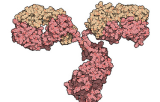
Unmodified secondaries
Secondary antibodies serve as amplifiers of the primary immune response. They recognize and bind to primary antibodies that have already latched onto a specific target antigen. This binding event triggers a cascade of amplification, allowing for the detection and quantification of the target with heightened sensitivity.
Versatility Across Applications:
- Secondary antibodies are highly adaptable, finding applications across a wide spectrum of research areas. They are integral in techniques such as western blotting, immunohistochemistry, immunocytochemistry, flow cytometry, and enzyme-linked immunosorbent assays (ELISAs). Their versatility empowers researchers to explore immune responses, disease mechanisms, and protein expression profiles
Species Specificity:
- To ensure accuracy, secondary antibodies are carefully selected based on their specificity for the host species of the primary antibody. This specificity minimizes the potential for cross-reactivity with other immunoglobulins, guaranteeing precise and reliable results.
Diverse Labels:
- Secondary antibodies can be labeled with various reporter molecules, such as enzymes, fluorophores, biotin, or gold nanoparticles. These labels enable the visualization or quantification of the target antigen, opening up avenues for innovative experimental designs.
Facilitating Multicolor Imaging:
- In the era of advanced imaging techniques, secondary antibodies are essential for multicolor fluorescence microscopy. Researchers can simultaneously visualize multiple antigens within the same sample, providing insights into complex biological processes.







